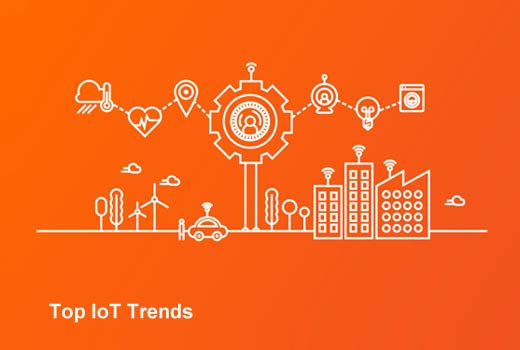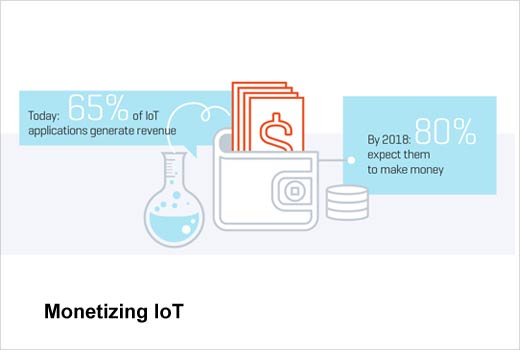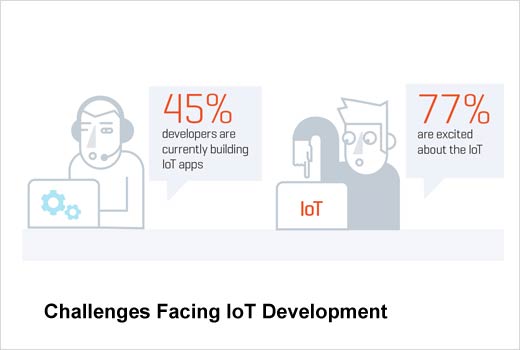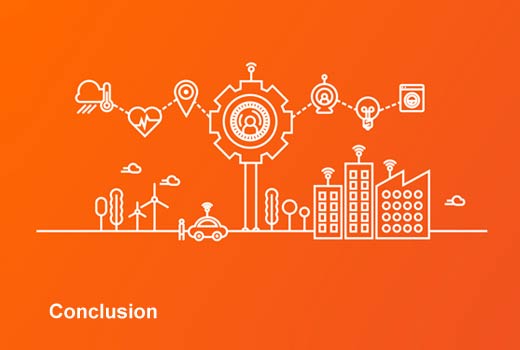The Internet of Things (IoT) can be simply defined as an interconnection of uniquely identifiable, embedded computing-like devices within the Internet infrastructure, but the term and dictionary definition often only limit future applications of the technology. A recent IoT industry survey by New Harbor Research and commissioned by Progress found that nearly half of the developers who were surveyed are building IoT applications right now, and nearly three-quarters of them are excited by the technology’s potential. This growing industry trend is evidenced by the vast array of smart devices, connected appliances and wearables along with accompanying applications currently on the market.
The survey asked developers about their thoughts on where the Internet of Things is headed. Topics ranged from the commercial reality and future potential of the IoT to developers’ biggest concerns and challenges as well as the opportunities for innovation currently available. Also discussed were the most popular operating systems and platforms for IoT development, and leading IoT industries today and looking forward.
A surprisingly diverse number of opinions were revealed about the current status of IoT adoption, where it will be in the future, and how to leverage it today.
Here are the top five compelling patterns that developers are seeing emerge in the Internet of Things space.

Top IoT Trends
Click through for findings from a study looking at the current status of the Internet of Things (IoT), where it is headed and how it can be leveraged today, conducted by Progress.

Industries Currently Being Served Best by IoT Applications
The most interesting areas that the survey discusses as currently being served by IoT devices and development include home automation (19 percent), wearables (13 percent), fitness (11 percent) and automotive (11 percent) applications. Success stories like FitBit and its recent IPO as well as the availability of devices like the Nest in big-box stores are paving the way toward widespread consumer adoption of IoT devices.
With the advent of the Apple Watch, wearable technologies have gained much customer-facing attention, both positive and negative, but many IoT wearables are both less glamorous and less expensive. The military has also provided fertile ground for developing integrated wearables, like those in the areas of infrared sensing and night vision. These applications can all be seen as the trailblazers in a history that is still unfolding. Additionally, medical applications are rapidly maturing, merging wireless technologies and sensors to monitor health. These innovations range from tiny devices to monitor heart rate all the way up to caregiving robots already in use in Japan and Europe.

Future Applications
Health care (14 percent), urban usage (13 percent) and automotive (12 percent) applications ranked high in their potential for future IoT applications. Tracking health statistics will dramatically impact the medical community as well as the general public as a whole. However, the bridge between gathering health data and sharing it safely and securely with the proper health care providers remains a key challenge for this sector. Codifying standards that will allow these diverse devices to safely communicate with one another is a key hurdle currently being addressed. The FDA, for example, has been working on standards for medical devices for many years.
The automotive industry is also facing scrutiny around the security of connected devices in cars. The recent demo of the hacking of a connected Jeep Cherokee demonstrated the ability for a hacker to drive it off the road, vividly illustrating the problems inherent in IoT security. Securing these devices is particularly daunting given the activity of hacker communities and the skills gap between many smaller development shops and the larger security community. In order to move IoT adoption forward, these factors will need to be addressed.

Monetizing IoT
Based on survey responses, only 65 percent of IoT applications were reported as having generated revenue. However, developers seemed to believe that focusing on services around managing and utilizing valuable user data, rather than the specific apps themselves, will be the best way to monetize the Internet of Things. Backend-as-a-system (BaaS) and platform-as-a-system (PaaS) options have flooded the market recently, enabling ease of access to the data generated by smart devices. According to the survey, 80 percent of IoT applications are expected to make money by 2018.

Challenges Facing IoT Development
Real concern was expressed by developers participating in the survey regarding the security and privacy of IoT sensors and the data they store. Integrating devices to transfer all of this sensitive data presents issues as well. Oftentimes, when building an IoT application, developers are focused primarily on its usability, but if this technology is to be used for data mining, security’s role needs to be far more prevalent.
Large companies such as Cisco, along with government agencies such as the Federal Trade Commission, have turned their attention to supporting the security needs of the IoT. In fact, The Federal Trade Commission has recommended an update to HIPAA, the Health Insurance Portability and Accountability Act of 1996, to ensure the sensitive medical data that is transmitted by IoT devices remains secure.
Further, developers should be aware that data privacy laws differ substantially in different areas of the world and should plan their localizations carefully. A considerable skills gap exists between the legal and development communities that must be bridged through open communication and the creation of well thought-out standards and guidelines for the storage and transmission of data.

Developers are not strongly united around a particular platform or language for developing IoT apps, but 29 percent think Android is the best OS for building and coordinating IoT apps. For those developers, Google’s new Project Brillo offers exciting, new options and will come out in the latter part of 2015. Not to be outdone, Apple’s HomeKit offers ease-of-integration between iOS devices and a wide variety of home automation ecosystems.
Fifty-five percent of those surveyed consider Java the best language with which to manage server-side data – not surprising, as even the Raspberry Pi runs on Java. Additionally, 75 percent use Rapid Application Development (RAD) tools at least occasionally. Many developers also turn to The Eclipse Foundation, which has been an early and steadfast supporter of the Internet of Things, for quality thought leadership on methods of development.

Conclusion
While 58 percent of developers expect the IoT to expand beyond smartphones and tablets within two years, and 60 percent see future IoT apps running in the cloud and interacting with multiple devices, the survey results demonstrated that developers do not see the Internet of Things as a lasting trend. Many felt that IoT devices will be replaced in the next five to 10 years by an even more advanced technology. A future-forward sentiment that seems to epitomize this fast-moving field is that there is always something even better and more innovative right around the corner.















